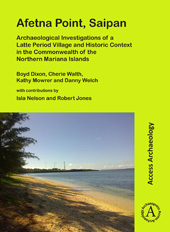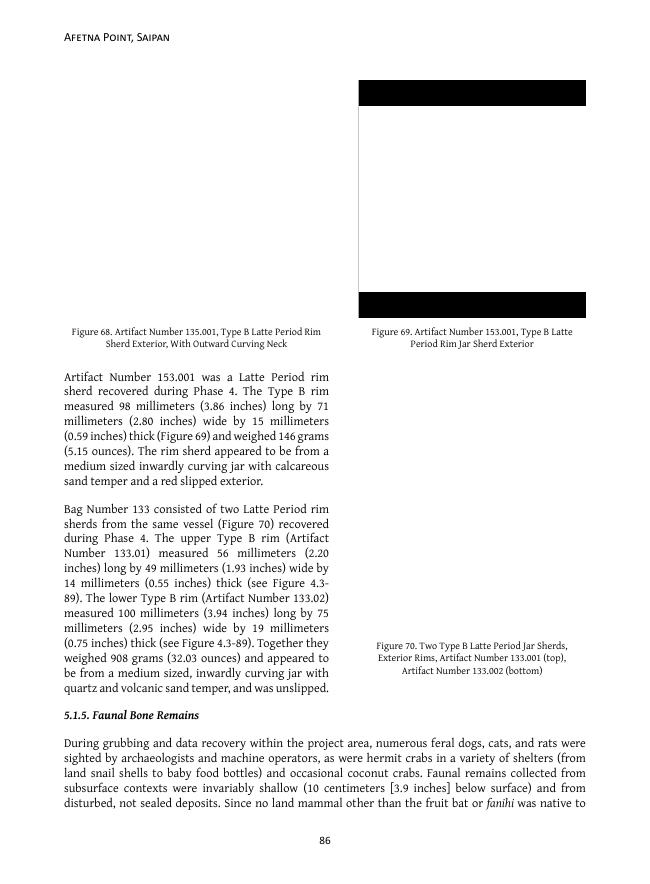Afetna Point, Saipan : Archaeological Investigations of a Latte Period Village and Historic Context in the Commonwealth of the Northern Mariana Islands
202 p.
When Ferdinand Magellan first anchored off the island of Guam in 1521, the inhabitants of the small Chamorro village at Afetna Point on the southwest coast of Saipan were likely unaware. Archaeological investigations of the traditional village yielded Latte Period burials, ceramics, stone and shell tools, microfossils from food remains, and charcoal from cooking features dating between A.D. 1450 and 1700. No direct evidence of Spanish Contact before forced abandonment of the island circa 1730 was encountered, after which time Saipan remained virtually unpopulated until the arrival of Carolinian and Chamorro settlers from Guam nearly a century later. Spanish settlement in 1668, the German occupation from 1898-1914, and the Japanese sugarcane period from 1914-1944 left few traces at the site until WWII and subsequent American administration. Afetna Point and Saipan have therefore been a contested landscape for centuries, but the island's prehistory has deep roots that tie the Mariana Islands and its modern cult
ure to ancestral SE Asia. [Publisher's text].
Special access authorizations may apply; please contact us for further information.
-
Información
ISBN: 9781789691771
MATERIAS
KEYWORDS
- Guam, Saipan, Chamorro, Afetna Point, Archaeological investigations, Latte Period, Shell Tools, Microfossils



